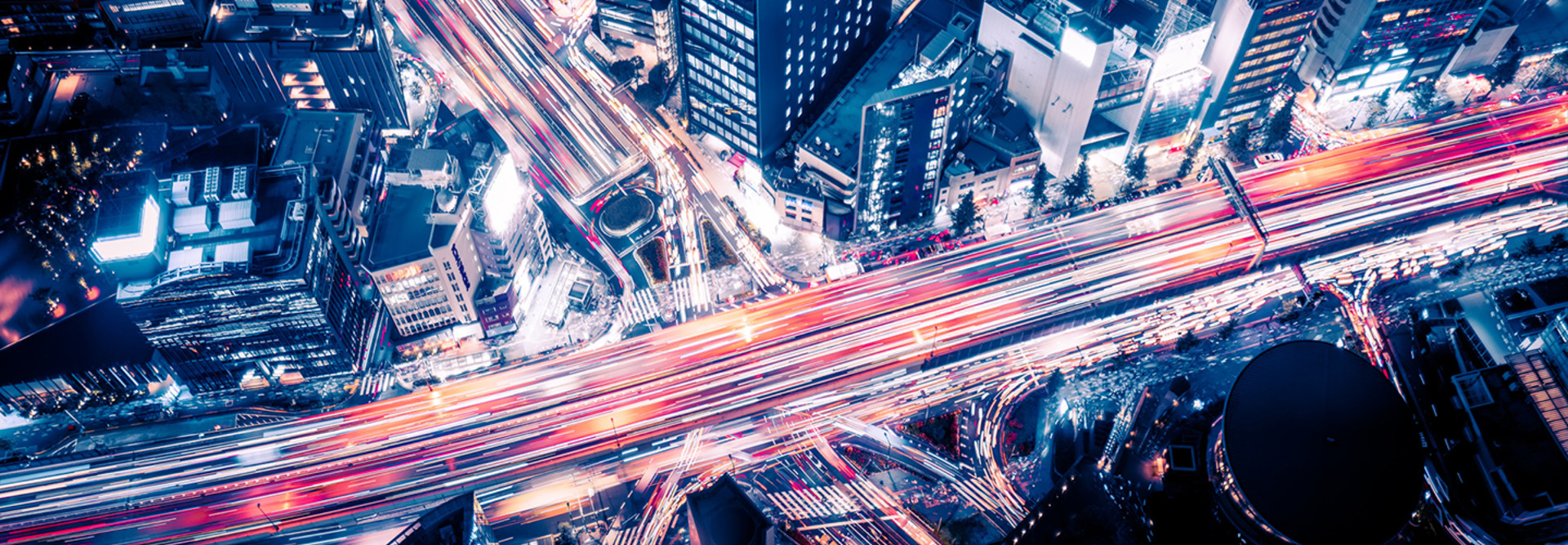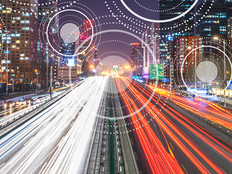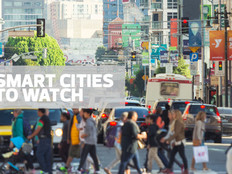State and Local Agencies Look to Edge Computing to Dodge a Data Tsunami
Smart cities face a problem as they scale up their data collection through broad deployment of connected sensors: Their networks and cloud storage may be unable to cope with the sheer volume of data they’re generating.
To futureproof their smart city investments, some local governments are turning to edge computing — analyzing the data in the sensor where it’s collected.
From the mundane present-day reality of traffic cameras and parking sensors to the rapidly approaching futurescape of drone fleets and autonomous vehicles, smart cities are deploying connected sensors at scale to collect data that can be used to drive improvements in services and improve residents’ quality of life.
As a result, explains Sameer Sharma, Intel’s general manager for new markets and business development in IoT, they are facing a “tsunami of data.” By 2020, smart cities around the globe will generate about 16.5 zettabytes of data every year, he says.
A zettabyte is 1,000 to the power of seven bytes — a trillion gigabytes. Think of it this way: If a gigabyte is an 11 oz. cup of coffee, a zettabyte would be a cup of coffee the size of the Great Wall of China.
That’s a whole lot of data. “It’s a vertical curve,” Sharma says of Intel’s projections. With such huge volumes of data, Sharma argues, “Trying to move it all from the edge to the cloud will completely clog up your network, even a 5G network.”
Moreover, there’s the cost.
MORE FROM STATETECH: Find out how cities can overcome challenges to smart city deployments.
Smart Cities Process Data in Place to Save Money
San Diego has deployed more than 6,000 connected Internet of Things sensors on streetlights throughout the city to collect data about traffic movements, parking availability, air quality and other issues to support the city’s goal to drive improvements in residents’ quality of life.
“We are moving from a reactive approach to citizen services to a predictive one — anticipating what’s going to happen and ensuring the resources are there to respond,” says Bahija Humphrey, the director of San Diego’s Performance and Analytics Department.
But “the amount of data we’re receiving from IoT devices is overwhelming,” says Erik Caldwell, interim deputy chief operating officer of San Diego. “And that data has a cost associated with it. Getting data from the sensor back to the cloud is something that costs a lot of money.”
One solution San Diego assessed was edge computing, where data is processed in the sensor itself, and the insights are extracted, Caldwell says. For example, the city counted the number of cars that cross an intersection during an hour and sent that number back to the cloud, rather than sending the entire hour of video.
“We realized early that we need to do more edge processing and send the finished data with insights already obtained back to the cloud, rather than sending it all,” Caldwell says.
Sharma highlights that edge computing could also have privacy advantages. In Portland, Ore., where Intel sensors examine the flow of pedestrians and cars at traffic intersections, the computation occurs in the cameras themselves and the footage is deleted.
“By doing the computing right there in the sensor, we give the customer the ability to choose the level of privacy and security they want,” he says.
San Diego’s cameras were programmed to only gather data from public highways and were not capable of reading license plates, Caldwell says. “We have built a lot of protections into it.”
Cities using connected sensors “have got to have a real conversation with their citizens and their internal stakeholders” about how the data is to be used, he adds.
MORE FROM STATETECH: Discover why these smart cities are the ones to watch.
Agencies Turn to Third-Party Data Aggregators to Help
Other jurisdictions are exploring different approaches to the data tsunami, looking at using third parties to gather and analyze data.
The Commonwealth of Virginia, as part of the I-95 Corridor Coalition, partners with Waze and INRIX to collect and analyze data about traffic flows. Both companies collect data from vehicles and analyze it.
“We are designing our networks to really accommodate a future of edge computing because that’s where we think we want to be, ultimately,” says Alireza Farhangi, state operations engineer at the Virginia Department of Transportation.
But in the meantime, “we are also looking at ‘make vs. buy’ type decisions on data” — using third parties to gather and analyze the data, and then buying the insights from them, he says.
This approach allows Virginia to outsource the costs of data collection, storage and analysis, and avoid the cost and risk of buying IoT technology that has to be maintained and that may quickly become obsolete.
“Instead of collecting a whole lot of data ourselves, putting a whole lot of sensors out in the field, we are gathering the information that we need from third parties,” Farhangi says.






.jpg)



